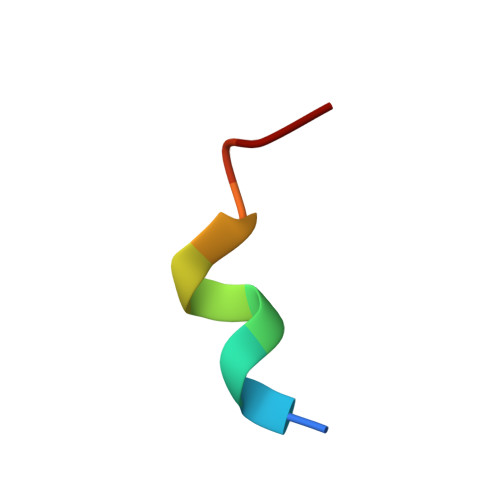Transformation of an alpha-helix peptide into a beta-hairpin induced by addition of a fragment results in creation of a coexisting state.
Araki, M., Tamura, A.(2006) Proteins 66: 860-868
- PubMed: 17177204
- DOI: https://doi.org/10.1002/prot.21263
- Primary Citation of Related Structures:
2DX2, 2DX3, 2DX4 - PubMed Abstract:
Intrinsic rules of determining the tertiary structure of a protein have been unknown partly because physicochemical factors that contribute to stabilization of a protein structure cannot be represented as a linear combination of local interactions. To clarify the rules on the nonlinear term caused by nonlocal interaction in a protein, we tried to transform a peptide that has a fully helical structure (Target Peptide or TP) into a peptide that has a beta-hairpin structure (Designed Peptide or DP) by adding seven residues to the C terminus of TP. According to analyses of nuclear magnetic resonance measurements, while the beta-hairpin structure is stabilized in some DPs, it is evident that the helical structure observed in TP is also persistent and even extended throughout the length of the molecule. As a result, we have produced a peptide molecule that contains both the alpha-helix and beta-hairpin conformation at an almost equally populated level. The helical structures contained in these DPs were more stable than the helix in TP, suggesting that stabilizing one conformation does not result in destabilizing the other conformation. These DPs can thus be regarded as an isolated peptide version of the chameleon sequence, which has the capability of changing the secondary structure depending on the context of the surrounding environment in a protein structure. The fact that the transformation of one secondary structure caused stabilization of both the original and the induced structure would shed light on the mechanism of protein folding.
Organizational Affiliation:
Graduate School of Science and Technology, Kobe University, Nada, Kobe 657-8501, Japan.














